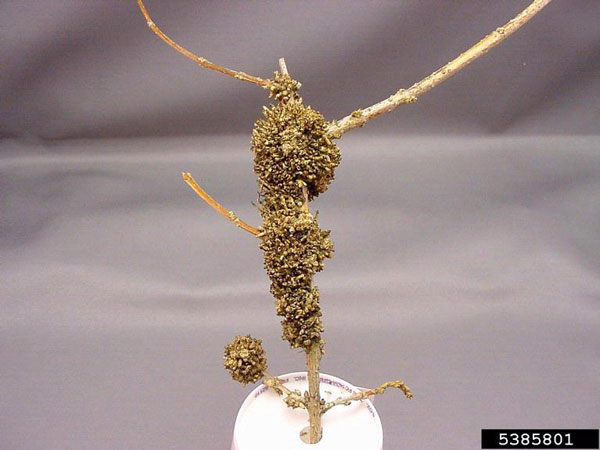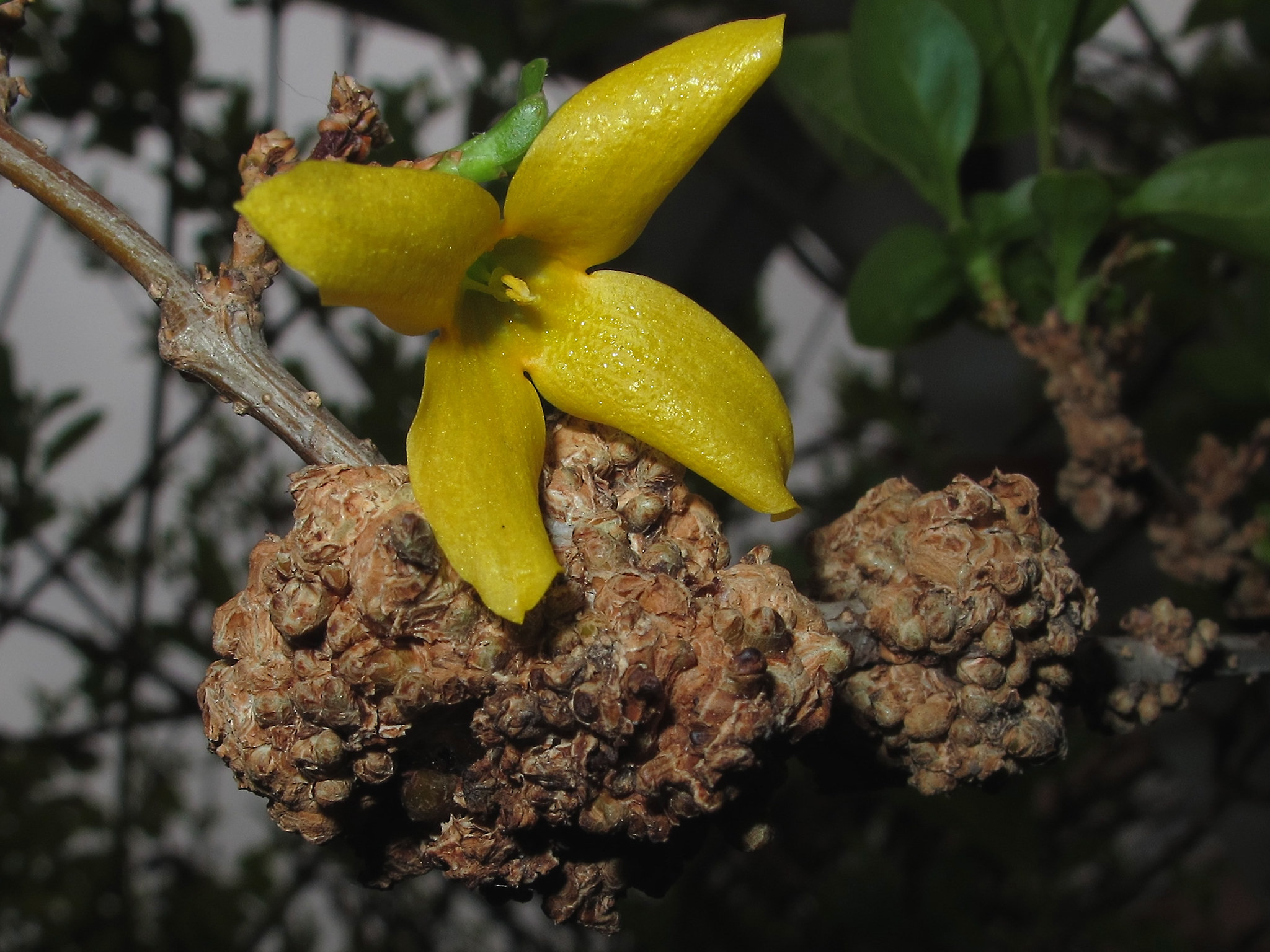The “Gall” of It: Galls on Forsythia
go.ncsu.edu/readext?989950
en Español / em Português
El inglés es el idioma de control de esta página. En la medida en que haya algún conflicto entre la traducción al inglés y la traducción, el inglés prevalece.
Al hacer clic en el enlace de traducción se activa un servicio de traducción gratuito para convertir la página al español. Al igual que con cualquier traducción por Internet, la conversión no es sensible al contexto y puede que no traduzca el texto en su significado original. NC State Extension no garantiza la exactitud del texto traducido. Por favor, tenga en cuenta que algunas aplicaciones y/o servicios pueden no funcionar como se espera cuando se traducen.
Português
Inglês é o idioma de controle desta página. Na medida que haja algum conflito entre o texto original em Inglês e a tradução, o Inglês prevalece.
Ao clicar no link de tradução, um serviço gratuito de tradução será ativado para converter a página para o Português. Como em qualquer tradução pela internet, a conversão não é sensivel ao contexto e pode não ocorrer a tradução para o significado orginal. O serviço de Extensão da Carolina do Norte (NC State Extension) não garante a exatidão do texto traduzido. Por favor, observe que algumas funções ou serviços podem não funcionar como esperado após a tradução.
English
English is the controlling language of this page. To the extent there is any conflict between the English text and the translation, English controls.
Clicking on the translation link activates a free translation service to convert the page to Spanish. As with any Internet translation, the conversion is not context-sensitive and may not translate the text to its original meaning. NC State Extension does not guarantee the accuracy of the translated text. Please note that some applications and/or services may not function as expected when translated.
Collapse ▲The Forsythia are one of the heralds of Spring. Many folks in the South share fond memories of seeing them flower in their family’s garden and bringing them indoors to force the blooms. The golden bells are incredibly forgiving plants and seem to thrive on neglect. They occupy the most challenging of corners and still thrive as a golden beacon on the edge of winter. Yet, there is something you should keep your eye out for that can impact the longevity of your Forsythia: galls.
What are galls and where do you find them?
Galls are similar to human moles or skin growths. According to The Kew Plant Glossary, galls are “a monstrous growth of part of the plant resulting from puncture by a parasitic insect, bacteria, fungi, or eelworm mites…” It sounds slightly  grotesque, but it can be. If you notice round growths off of a tree or round ball-like growths on a leaf, they are probably a gall. Since galls are caused by specific species and each host species responds differently to the gall-causing species, they can take a wide variety of forms. Some are harmless and some can impact the overall health of the plant.
grotesque, but it can be. If you notice round growths off of a tree or round ball-like growths on a leaf, they are probably a gall. Since galls are caused by specific species and each host species responds differently to the gall-causing species, they can take a wide variety of forms. Some are harmless and some can impact the overall health of the plant.
Forsythia Gall Mystery
Forsythia, despite their stolid nature, are also susceptible to gall formations at their nodes, which can start off small and mild and swell to warty, compounding growths that are visible from across the yard. Unfortunately, science has not identified exactly what causes these galls. Some Extension resources say it is caused by a species of Crown Gall (Agrobacterium tumefaciens), the fungus called Phomopsis, or the Pseudomonas savastanoi bacterium that galls oleander and olive (of which Forsythia is related).
Forsythia Gall is not necessarily going to outrightly kill your shrub. It is more of a slow death and general decline. The galls make transporting sugars and water harder and less efficient, so shrubs struggle to thrive. As the infestation gets worse, you will notice your shrub will not flower as well and will become stunted, not to mention unsightly as the galls become more and more obvious as they get larger.
What do you do about the galls?
The wintertime is a great time to inspect your golden bell bushes to see if they have Forsythia gall. The treatment for Forsythia gall is consistent across Extension publications though. If they do have galls present, you should remove these branches as soon as possible. Make sure to have a spray bottle of at least 70 percent isopropyl alcohol with you. You should spray your pruners between each cut to prevent spreading the disease (whatever it is!) into uninfected parts of the plant.
percent isopropyl alcohol with you. You should spray your pruners between each cut to prevent spreading the disease (whatever it is!) into uninfected parts of the plant.
If there are just a few branches, you can remove these in the winter without impacting the overall blooming of the plant. Do not compost them, as the pathogen can potentially reinfect your plants. But, if your whole shrub is exhibiting signs of the galls, you should cut them to the ground right after the shrubs flower, and burn or remove the branches from your property. Forsythias put on a flush of new growth as soon as they are done flowering, so timing a hard cutback right after flowering will take advantage of this natural flush of energy from the roots.
Diligence and Timing
Our plants’ health relies on us gardeners paying attention to the signs and symptoms of pests and pathogens, and understanding the cycles of our plants’ lives. They may not speak to us in words, but they can tell us what is going on in their world, if we just pay attention. Look out of Forsythia galls on your golden bells and help ensure they have long lives!
Amanda Wilkins is the Horticulture Agent for North Carolina Cooperative Extension in Lee County.




